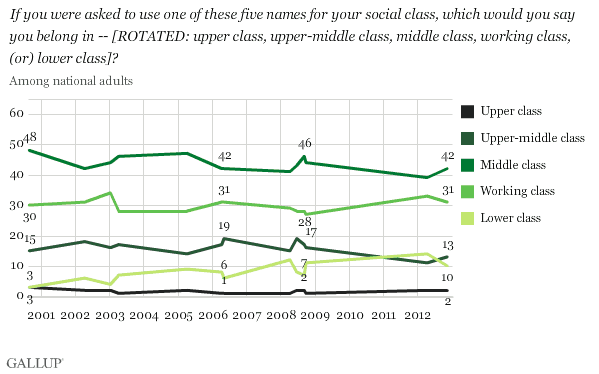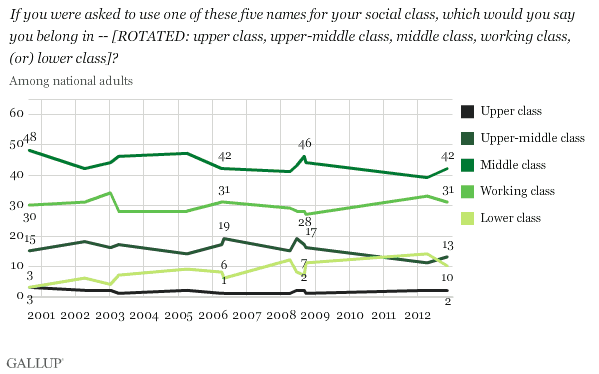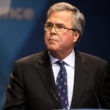
Which is all nonsense, according to polling data going back to the invention of polls.
In 1949, just 32 percent of Americans identified themselves as middle class in one major poll, while 61 percent identified as working class. Then came the big postwar boom and middle class expansion. By 1972, 44 percent of Americans saw themselves as middle class, and 47 percent as working class. (A small percentage of people also saw themselves as either lower class or upper class.)
| Even during the heyday of middle-class America, a certain kind of class consciousness was ever present among a big swath of the population. |
That roughly even split—between middle and working class identity—persisted through the 1990s, although some polls showed that more people saw themselves as working class well into the Clinton years.
In short, even during the heyday of middle-class America, a certain kind of class consciousness—awareness of being lower on the ladder—was ever present among a big swath of the population.
More recent polling by Gallup has asked respondents to choose among five different class identities: lower class, working class, middle class, upper middle class, or upper class. The most recent of these polls, in 2012, found that 43 percent chose middle class—while 41 percent chose working or lower class. Two percent said upper class and 13 percent said upper-middle class. Those numbers haven’t changed that much in the past decade, save for a modest trend of more people seeing themselves as lower class and fewer identifying as middle class.
All this data, going back decades, stands very much at odds with how we talk about class. The term “working class” isn’t uttered so often by politicians in a stand-alone way—although President Obama and others will often say “working and middle class” Americans. The term almost seems dated, as if whoever uses it is stuck in a “Laverne & Shirley” re-run. Sure, we hear a lot about low-wage workers and “working families,” but the clear class component here has drifted quietly out of political discourse—even though tens of millions still think of themselves as working class.
You’d think that progressives, at least, would talk often about the working class, but that’s not really the case. Instead, we prefer “working families,” which is bad choice for a few reasons—starting with the fact that many affluent professionals actually work longer hours than low-wage workers, who are more likely to be underemployed or unemployed. But the big problem is that when we drop the word “class,” we lose that all-important reminder that there is a rigid economic hierarchy in America, more rigid than in many European countries, according to mobility research.
One reason it may be hard to talk about the working class is that who’s in this group seems fuzzy these days. We know it’s no longer a bunch of white guys with metal lunch pails. But another equally clear demographic has yet to replace that image.
Americans who are working class know who they are, and openly say who they are to pollsters. Now we just need a political discourse that channels this sense of identity in useful ways.
David Callahan co-founded Demos. He wrote this for PolicyShop.







0 Comments